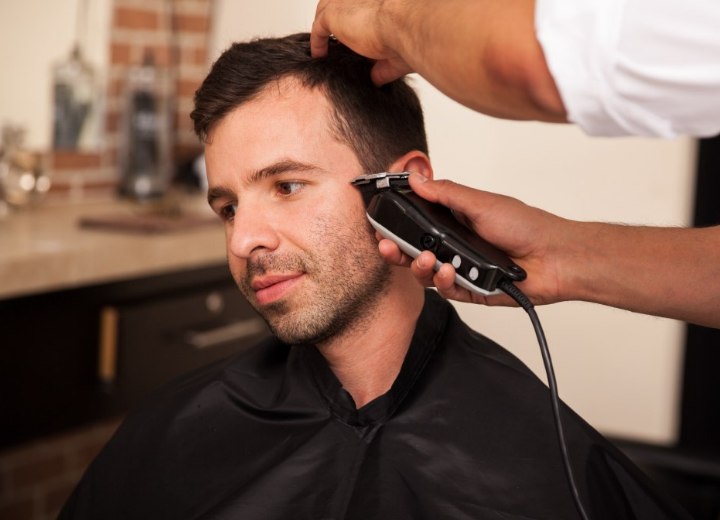How to do Taper Cutting

A: The taper cut is the staple of the short men’s haircut styles. That’s not to say that some women don’t favor a taper cut, but it is predominantly worn by men. Simply put, the taper cut is characterized by the fact that the hair tapers gradually from the established length in the top and crown sections, growing shorter as one travels toward the bottom hairline at the perimeter of the hair.
#1 guard cuts to 1/8th inch; #2 guard cuts to 1/4th inch; #3 guard cuts to 3/8th inch; #4 guard cuts to ½ inch, and so on in 1/8th to 1/4th inch increments. We only need to concern ourselves with the first four guard lengths for our standard taper cut.
The easiest method to use for the taper cut is to start with the #4 guard and cut the hair up from the bottom hairline to the parietal ridge (the point at which the sides and nape begin to curve in toward the top or crown sections. As you reach the ridge rock your hand outward lifting the clippers away from the scalp in a smooth motion. Take your time and go as slowly as you need to in order to feel comfortable. You may want to cut the lower portions first and stop short of the ridge so that you can focus on that and work your way around the head to keep the line even.
Once your preliminary cut is finished, change to the #3 guard and repeat the process. This time stop cutting and rock your hand away at about one-quarter of the distance from the parietal ridge to the bottom hairline. This will be a lesser increment in some sections, since the size and shape of each individual’s head varies. Once the #3 lengths have been established, change out the guard for the #2 guard and repeat the steps for the next tier of lengths.
Once you’ve finished and have cut the hairline and areas just above it using the #1 guard, you should have a series of four, clearly defined sections of decreasing lengths. Now it is time to blend these sections. To do this, you need the clippers without a guard, and a styling comb with two separate sections of teeth, one wide and one fine.
Use the comb to gently lift the hair up at the borders between sections by combing the hair at an angle across the head from the bottom upward. You should note a point in the hair as you comb it and hold it outward where the two lengths merge. Use the comb as a guide and gently glide the clippers up along the comb to remove the point and therefore blend the sections into a smoother transition. Work your way carefully around the head until you’ve blended all the sections and removed all the abrupt shifts in length.
When this is done, it’s time to work with the top and crown sections. For this, you’ll shift to your scissors and will start by establishing the length you wish to have for the top section of the head. Cut the fringe area first and use this to establish your guide length. Once the fringe length is cut, comb the hair upward and hold it at vertical elevation and cut the hair to this length, working slowly from side to side and front to back.
At the parietal ridge, there will still be a clear difference in the side and top lengths. Use your comb, held vertically and take slices and hold them straight out to the side, then cut the hair to blend the lengths. Depending on how long you want to have your top section, you may need to use an angle that points out from the scalp, but in most cases you should see a clear point that can be cut away to blend the line where the two sections join.
©hairfinder.com
